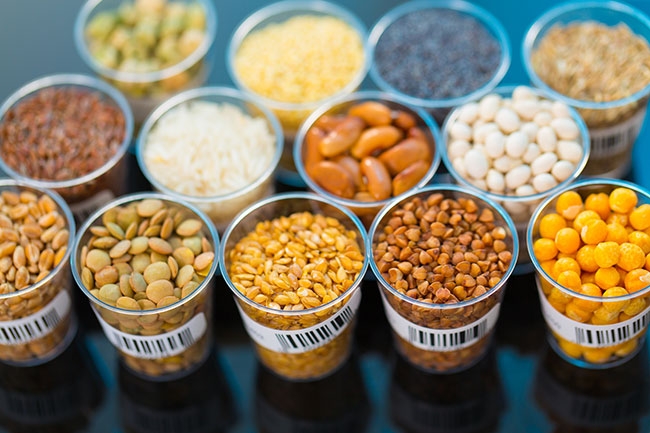
The Final Proof: Cleaning Up The Label
March 30, 2017
By
Jane Dummer
Consumers are calling for simpler ingredients, but companies need to be willing to educate.
 Photo: Fotolia
Photo: Fotolia Many consumers welcome ingredients they can see and pronounce on food packages. They value ingredient declarations that do not contain long lists of chemical-sounding words.
For example, azodicarbonamide (ADA) is commonly used in bakery products and flour. Consumers pressured Subway restaurants to remove that additive from their bread. Artificial preservatives, colours and flavours are increasingly being perceived as unnatural and unhealthy. The industry has listened to consumer demands and has made significant efforts to create “clean label” products.
It’s much easier to create a new product with a clean label rather than reformulate an existing product due to consumer expectations of how that product appears and tastes, as well as its retail price. NSF International technical manager Karen Proper explains: “Understanding your product and your manufacturing process will determine the associated key attributes. Each bakery product is different and as such, a one-size fits all response cannot be applied. Factors to consider include the functional role and inclusion levels of the ingredients, the method of processing and storage (frozen, par-baked, fresh), the packaging and the desired shelf life.”
The preference for whole, simple, and transparent ingredients, along with the term “natural,” continues to resonate with consumers and food marketers. Proper has seen an increase in the use of extracts of green tea, acerola, and rosemary as clean label antioxidant alternatives to TBA and TBHQ, which are commonly used in the baking industry.
Proper reminds us, “With regard to the term ‘natural,’ the Canadian Food Inspection Agency provides guidance regarding the expectations for a food (or an ingredient of a food) represented as natural. In the United States, the FDA also does not currently have a definition for the term natural. In response to consumer demand, the FDA has asked the public to provide information and comments on the use of natural in the labelling of human food products. The comment period closed on May 10, 2016, and we currently await direction from the FDA on their findings. A clear definition for ‘clean label’ does not exist within Canada or the United States. The term clean label is interpreted differently by consumers and manufacturers alike.”
Without a clear definition of clean label, the term is open to interpretation. This presents an educational opportunity for food professionals to assist today’s consumer to take a practical approach to clean labels. I know from my own experience the first time I saw the full declaration of ingredients for a banana, which included hexanote as a flavour and palmitoleic acid (3 per cent) as a fatty acid, I thought, “What is the consumer going to do with this information?”
Another time during a media interview, I referred to the omega-3 fatty acid content in salmon. The national news publication journalist who was interviewing me got hung up on the word “acid” and I needed then to educate her on the term. From that point on, I have referred to it as omega-3 fat.
Rob Kowal, president of Kriscor & Associates, agrees, saying, “Consumers have a difficult time understanding technical terms and want to see a label with ingredients they can easily read and relate to.”
Kowal has seen a push to remove artificial sweeteners and preservatives in the baking sector. “On the panel, if there are too many ingredients, particularly with chemical-sounding names, the consumer may not purchase the product. This is an opportunity for food professionals, the industry and stakeholders to educate consumers at the point where they are getting some their information, including social media channels such as food bloggers.”
Proper emphasizes, “Reformulating to remove preservatives or emulsifiers involves work at the bench level, processing trials, shelf-life testing, label revisions and other required activities. Depending on the complexity of the product and manufacturing process, plus the capacity for the company to react quickly, this clean label process could easily range between nine to 12 months.”
If manufacturers are going to this effort, there is an important opportunity to educate the consumer so the clean label benefits versus the impact to appearance, taste, shelf-life and costs can be understood.
Jane Dummer, RD (www.janedummer.com), known as the Pod to Plate Food Consultant, collaborates and partners with the food and nutrition industry across North America.
Print this page
Leave a Reply